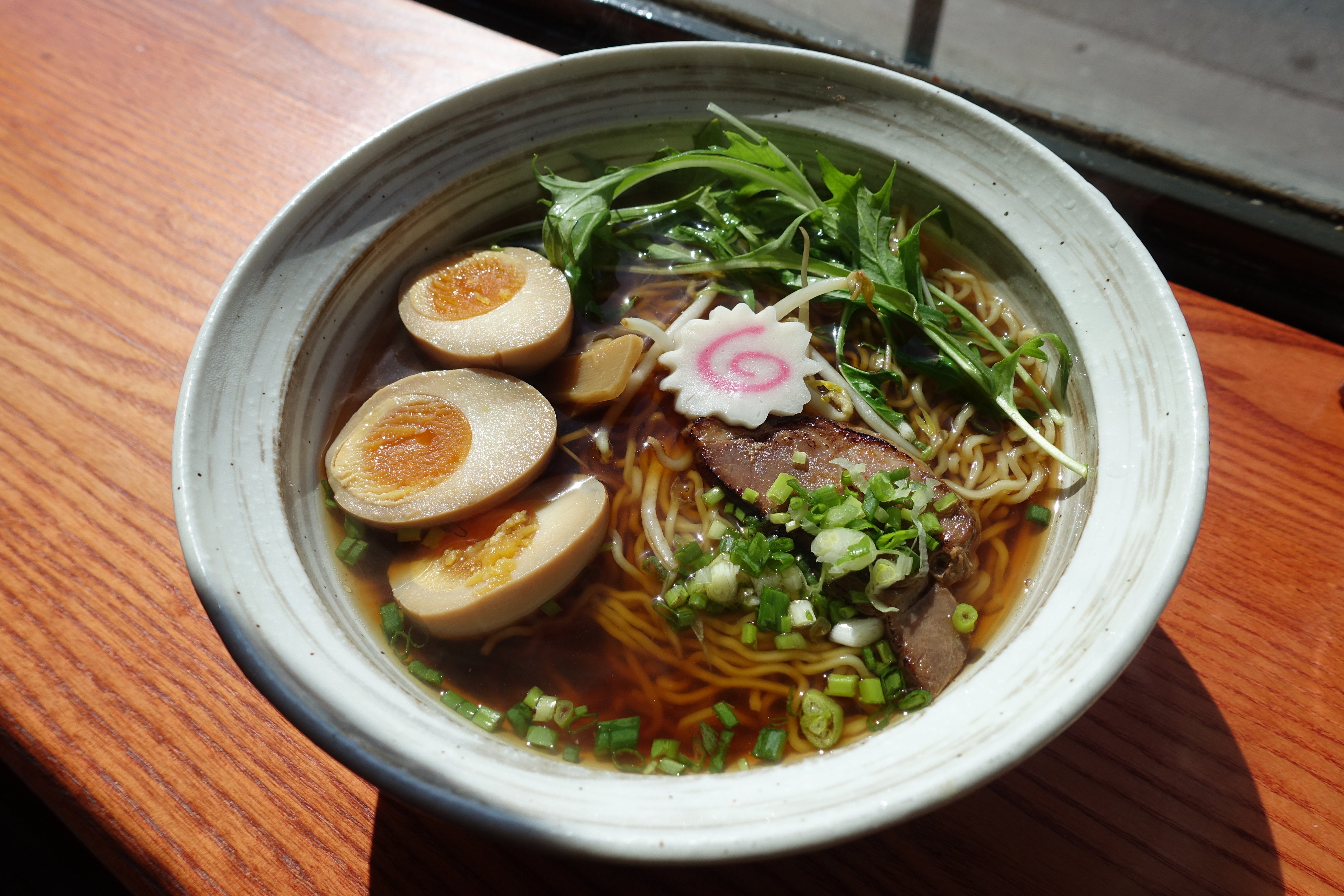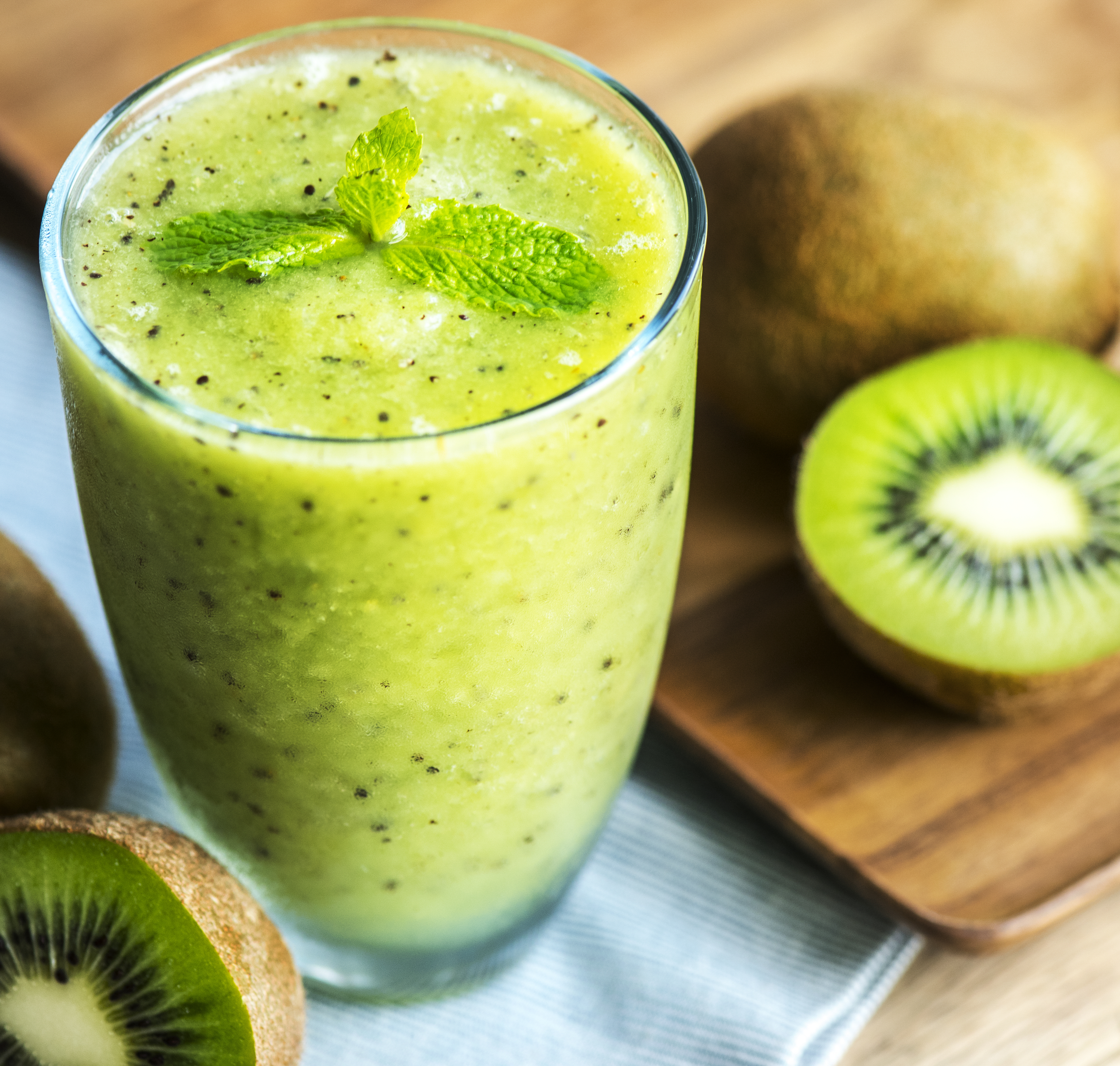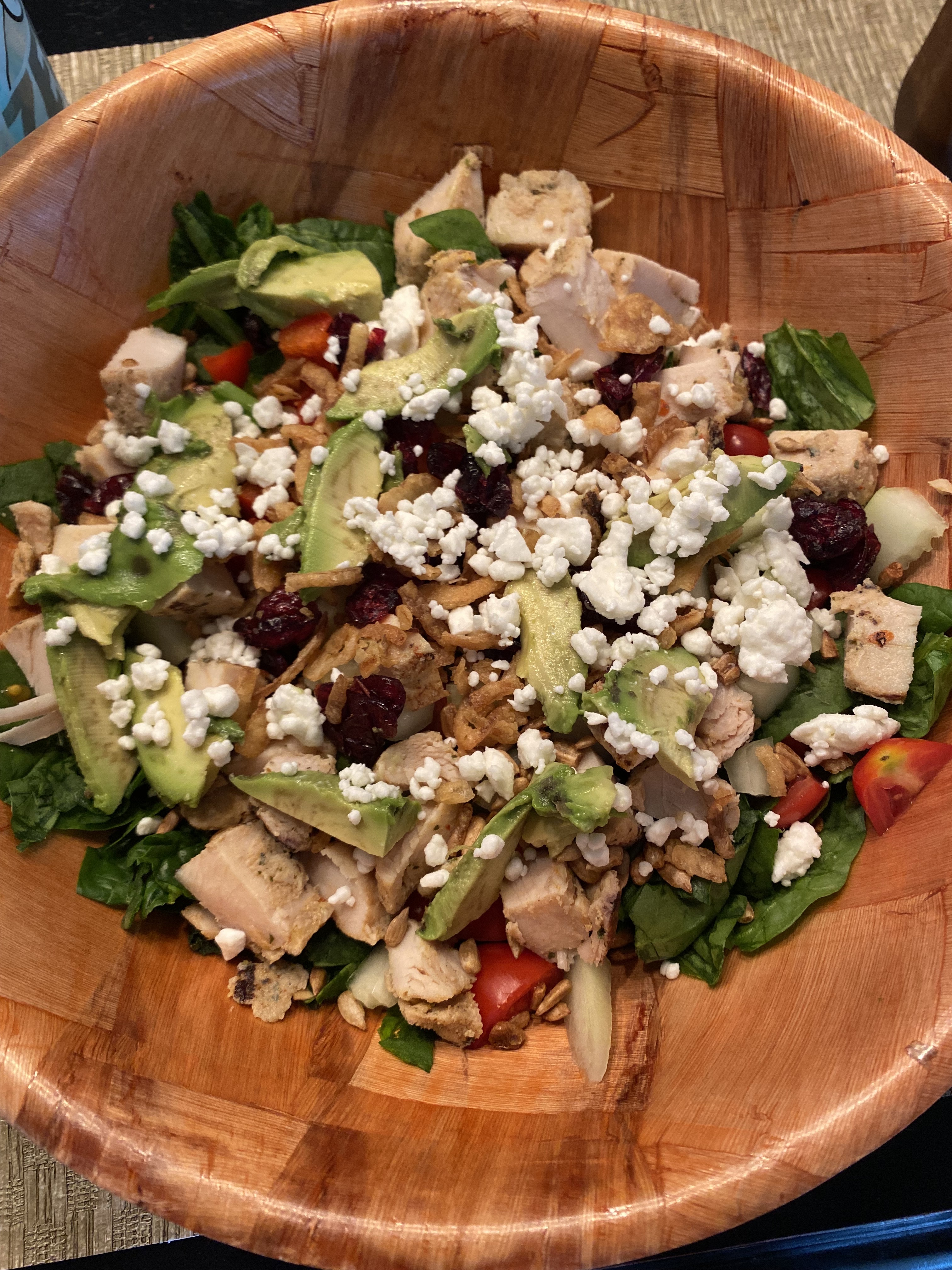|
Amazake
is a traditional sweet, low-alcohol or non-alcoholic Japanese drink made from fermented rice. ''Amazake'' dates from the Kofun period, and it is mentioned in the Nihon Shoki. It is part of the family of traditional Japanese foods made using the koji mold , which also includes miso, soy sauce, and sake. There are several recipes for ''amazake'' that have been used for hundreds of years. By a popular recipe, ''kōji'' is added to cooled whole grain rice causing enzymes to break down the carbohydrates into simpler unrefined sugars. As the mixture incubates, sweetness develops naturally. By another recipe, sake kasu is mixed with water and sugar is added. ''Amazake'' can be used as a dessert, snack, natural sweetening agent, salad dressing or smoothie. One traditional ''amazake'' drink, prepared by combining ''amazake'' and water, heated to a simmer, and often topped with a pinch of finely grated ginger, was popular with street vendors, and it is still served at inns, teah ... [...More Info...] [...Related Items...] OR: [Wikipedia] [Google] [Baidu] |
Sake
Sake, , or saki, also referred to as Japanese rice wine, is an alcoholic beverage of Japanese origin made by fermenting rice that has been polished to remove the bran. Despite the name ''Japanese rice wine'', sake, and indeed any East Asian rice wine (such as huangjiu and cheongju), is produced by a brewing process more akin to that of beer, where starch is converted into sugars that ferment into alcohol, whereas in wine, alcohol is produced by fermenting sugar that is naturally present in fruit, typically grapes. The brewing process for sake differs from the process for beer, where the conversion from starch to sugar and then from sugar to alcohol occurs in two distinct steps. Like other rice wines, when sake is brewed, these conversions occur simultaneously. The alcohol content differs between sake, wine, and beer; while most beer contains 3–9% ABV, wine generally contains 9–16% ABV, and undiluted sake contains 18–20% ABV (although this is often lowered to abou ... [...More Info...] [...Related Items...] OR: [Wikipedia] [Google] [Baidu] |
Sake Kasu
or sake lees are the pressed Lees (fermentation), lees left from the production of sake (Japanese rice wine). It is a white paste used in cooking. Its taste is fruity and similar to sake. A by-product of Japanese sake production, it typically contains 8% alcohol, has high nutritional value, and might have health benefits. Sake Kasu is used as a Marination, marinade for Japanese dishes based on fish, vegetables, and meat, and contributes an umami flavor to the dish. Sake kasu is also found in cosmetics and skincare products. Sake kasu is considered as a part of the Japanese Mottainai, “no waste” culture since the waste of the sake production is used in various ways. Mirin, a type of sweet Japanese sake, can also produce kasu called mirin kasu. Similar to sake kasu, mirin kasu can also be used as a healthy food ingredient. Process Sake kasu is created during the sake brewing process. When Aspergillus_oryzae, koji, a type of fungus used for sake brewing, is added to steamed ... [...More Info...] [...Related Items...] OR: [Wikipedia] [Google] [Baidu] |
Soy Sauce
Soy sauce (sometimes called soya sauce in British English) is a liquid condiment of China, Chinese origin, traditionally made from a fermentation (food), fermented paste of soybeans, roasted cereal, grain, brine, and ''Aspergillus oryzae'' or ''Aspergillus sojae'' Mold (fungus), molds. It is recognized for its saltiness and pronounced umami taste. Soy sauce was created in its current form about 2,200 years ago during the Western Han dynasty of ancient China. Since then, it has become an important ingredient in List of Asian cuisines, East and Cuisine of Southeast Asia, Southeast Asian cooking as well as a condiment worldwide. Use and storage Soy sauce can be added directly to food, and is used as a dip or Salt#Edible salt, salt flavor in cooking. It is often eaten with rice, Japanese noodles, noodles, and sushi or sashimi, or can also be mixed with ground wasabi for dipping. Bottles of soy sauce for the salty seasoning of various foods are common on restaurant tables in many co ... [...More Info...] [...Related Items...] OR: [Wikipedia] [Google] [Baidu] |
Jiuniang
''Jiuniang'' is a sweet, soup- or pudding-like dish in Chinese cuisine. It is also known as sweet wine or sweet rice wine. It consists of a mixture of partially digested rice grains floating in a sweet saccharified liquid, with small amounts of alcohol (1.5–2%) and lactic acid (0.5%). It is made by fermenting glutinous rice with a starter called '' jiuqu'' containing ''Rhizopus oryzae'' or ''Aspergillus oryzae'' and often yeast and bacteria. Ingredients and preparation It was first developed as a by-product of '' mijiu'' production and generally speaking is partially digested rice from a young rice wine (or vinegar) ferment. If eaten quickly or held at 10 degrees or less, which halts the fermentation, the product can be consumed as ''jiuniang''. If the temperatures are raised and fermentation continues, ''jiuniang'' will eventually produce rice wine or rice vinegar. ''Jiuniang'' is most commonly made and consumed in the winter, where fermentation can be halted easily.Li, Jia ... [...More Info...] [...Related Items...] OR: [Wikipedia] [Google] [Baidu] |
Japanese Cuisine
Japanese cuisine encompasses the regional and traditional foods of Japan, which have developed through centuries of political, economic, and social changes. The traditional cuisine of Japan (Japanese language, Japanese: ) is based on rice with miso soup and other dishes with an emphasis on seasonal ingredients. Side dishes often consist of fish, Tsukemono, pickled vegetables, tamagoyaki, and vegetables cooked in broth. Common seafood is often grilled, but it is also sometimes served raw as sashimi or as sushi. Seafood and vegetables are also deep-fried in a light batter, as '. Apart from rice, a staple includes noodles, such as soba and udon. Japan also has many simmered dishes, such as fish products in broth called , or beef in and . Historically influenced by Chinese cuisine, Japanese cuisine has also opened up to influence from European cuisine, Western cuisines in the modern era. Dishes inspired by foreign food—in particular Chinese food—like ramen and , as well as foods ... [...More Info...] [...Related Items...] OR: [Wikipedia] [Google] [Baidu] |
Hangover
A hangover is the experience of various unpleasant physiological and psychological effects usually following the consumption of alcohol (beverage), alcohol, such as wine, beer, and liquor. Hangovers can last for several hours or for more than 24 hours. Typical symptoms of a hangover may include headache, Somnolence, drowsiness, weakness, concentration problems, Xerostomia, dry mouth, dizziness, fatigue (medical), fatigue, muscle ache, gastrointestinal distress (e.g., nausea, vomiting, diarrhea), Anorexia (symptom), absence of hunger, Photophobia, light sensitivity, Depression (mood), depression, Perspiration, sweating, hyper-excitability, high blood pressure, irritability, and Anxiety attack, anxiety. While the causes of a hangover are still poorly understood, several factors are known to be involved including acetaldehyde accumulation, changes in the immune system and glucose metabolism, dehydration, metabolic acidosis, disturbed prostaglandin synthesis, increased cardiac out ... [...More Info...] [...Related Items...] OR: [Wikipedia] [Google] [Baidu] |
Buddhist Temples In Japan
Buddhist temples or monasteries are (along with Shinto shrines) the most numerous, famous, and important religious buildings in Japan.The term "Shinto shrine" is used in contrast to "Buddhist temple" to mirror the distinction made in Japanese between Shinto and Buddhist religious structures. In Japanese the first are called , the second . The shogunates or leaders of Japan have made it a priority to update and rebuild Buddhist temples since the Azuchi–Momoyama period, Momoyama period (late 16th century). The Japanese language, Japanese word for a Buddhist monastery is (kanji, ''kun'' reading), and the same kanji also has the pronunciation ''ji'' (''on'' reading), so temple names frequently end in ''-dera'' (rendaku, voiced) or ''-ji''. Another ending, , is normally used to refer to minor temples. Examples of temple names that have these suffixes are Kiyomizu-dera, Enryaku-ji and Kōtoku-in. Etymology The Japanese word for a Buddhist temple, , was anciently also written phonetic ... [...More Info...] [...Related Items...] OR: [Wikipedia] [Google] [Baidu] |
Shinto Shrine
A Stuart D. B. Picken, 1994. p. xxiii is a structure whose main purpose is to house ("enshrine") one or more kami, , the deities of the Shinto religion. The Also called the . is where a shrine's patron is or are enshrined.Iwanami Japanese dictionary The may be absent in cases where a shrine stands on or near a sacred mountain, tree, or other object which can be worshipped directly or in cases where a shrine possesses either an altar-like structure, called a himorogi, , or an object believed to be capable of attracting spirits, called a yorishiro, , which can also serve as direct bonds to a . There may be a and other structures as well. Although only one word ("shrine") is used in English, in Japanese, Shinto shrines may carry any one of many different, non-equivalent names like , , , , , , , , , or . Miniature shrines (hokora, ) can occasionally be found on roadsides. Large shrines sometimes have on their precincts miniature shrines, or . Because the and once had differe ... [...More Info...] [...Related Items...] OR: [Wikipedia] [Google] [Baidu] |
Tea House
A teahouse or tearoom (also tea room) is an establishment which primarily serves tea and other light refreshments. A tea room may be a room set aside in a hotel, especially for serving afternoon tea, or may be an establishment that only serves cream tea. Although the function of a tea room may vary according to the circumstance or country, tea houses often serve as centers of social interaction, like coffee houses. Some cultures have a variety of distinct tea-centered establishments of different types, depending on the national tea culture. For example, the British or American tea room serves afternoon tea with a variety of small snacks. East Asia Throughout China and Japan, a teahouse ( Chinese: , or , ; Japanese: ; Standard Nepali: ''chiya ghar'' ()) is traditionally a place which offers tea to its customers. People gather at teahouses to chat, socialize and enjoy tea, and young people often meet at teahouses for dates. The Guangdong (Cantonese) style teahouse ... [...More Info...] [...Related Items...] OR: [Wikipedia] [Google] [Baidu] |
Sugar
Sugar is the generic name for sweet-tasting, soluble carbohydrates, many of which are used in food. Simple sugars, also called monosaccharides, include glucose Glucose is a sugar with the Chemical formula#Molecular formula, molecular formula , which is often abbreviated as Glc. It is overall the most abundant monosaccharide, a subcategory of carbohydrates. It is mainly made by plants and most algae d ..., fructose, and galactose. Compound sugars, also called disaccharides or double sugars, are molecules made of two bonded monosaccharides; common examples are sucrose (glucose + fructose), lactose (glucose + galactose), and maltose (two molecules of glucose). White sugar is almost pure sucrose. In the body, compound sugars are hydrolysed into simple sugars. Longer chains of monosaccharides (>2) are not regarded as sugars and are called oligosaccharides or polysaccharides. Starch is a glucose polymer found in plants, the most abundant source of energy in human foo ... [...More Info...] [...Related Items...] OR: [Wikipedia] [Google] [Baidu] |
Smoothie
A smoothie is a beverage made by puréeing ingredients in a blender. A smoothie commonly has a liquid base, such as fruit juice or milk, yogurt or ice cream. Other ingredients may be added, including fruits, vegetables, non-dairy milk, crushed ice, whey powder or nutritional supplements. History of smoothies Health food stores on the west coast of the United States began selling smoothies with the invention of the electric blender. The actual term "smoothie" was being used in recipes and trademarks by the mid-1980s. In the 1960s Steve Kuhnau was inspired by his work as a soda jerk and began experimenting with smoothies. They were an alternative for the lactose intolerant Kuhnau to taste his own concoctions using unique blends of fruit juices, vegetables, protein powder, and vitamins. Kuhnau discovered early success in his smoothie sales and founded Smoothie King. Smoothie King expanded throughout the United States and would pioneer other smoothie businesses. The ... [...More Info...] [...Related Items...] OR: [Wikipedia] [Google] [Baidu] |
Salad
A salad is a dish consisting of mixed ingredients, frequently vegetables. They are typically served chilled or at room temperature, though some can be served warm. Condiments called '' salad dressings'', which exist in a variety of flavors, are usually used to make a salad. Garden salads have a base of raw leafy greens (sometimes young "baby" greens) such as lettuce, arugula (rocket), kale or spinach; they are common enough that the word ''salad'' alone often refers specifically to garden salads. Other types of salad include bean salad, tuna salad, bread salads (such as fattoush, panzanella), vegetable salads without leafy greens (such as Greek salad, potato salad, coleslaw), rice-, pasta- and noodle-based salads, fruit salads and dessert salads. Salads may be served at any point during a meal: * Appetizer salads – light, smaller-portion salads served as the first course of the meal * Side salads – to accompany the main course as a side dish; examples inclu ... [...More Info...] [...Related Items...] OR: [Wikipedia] [Google] [Baidu] |









